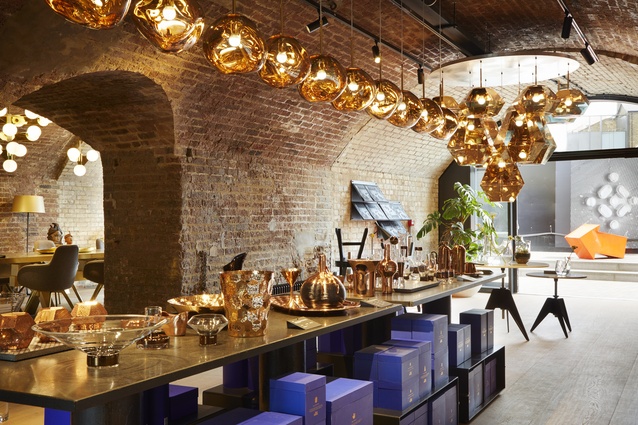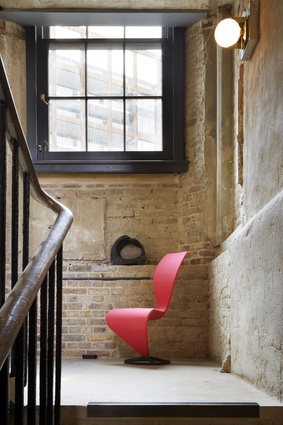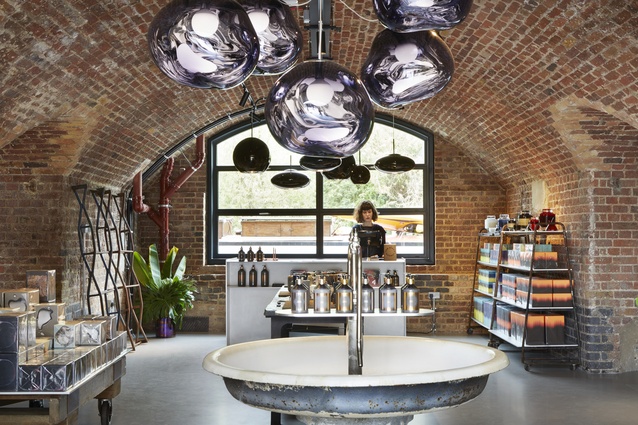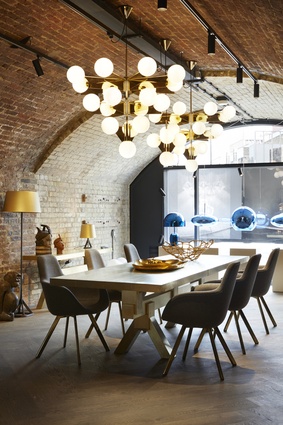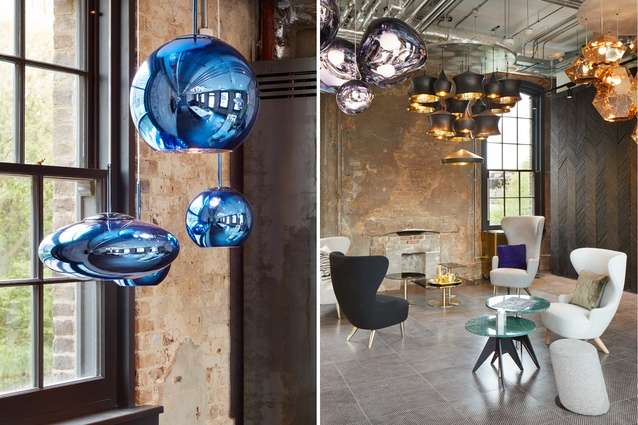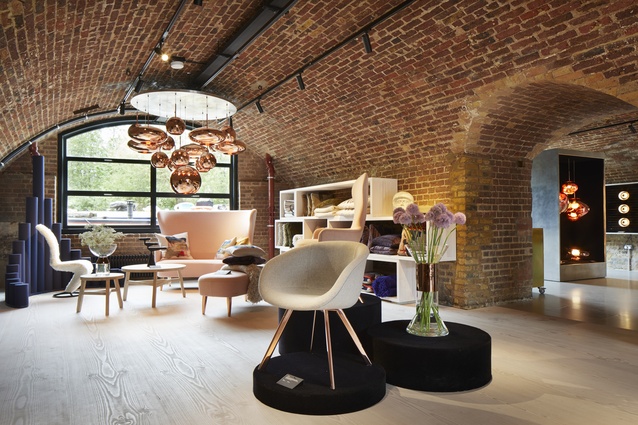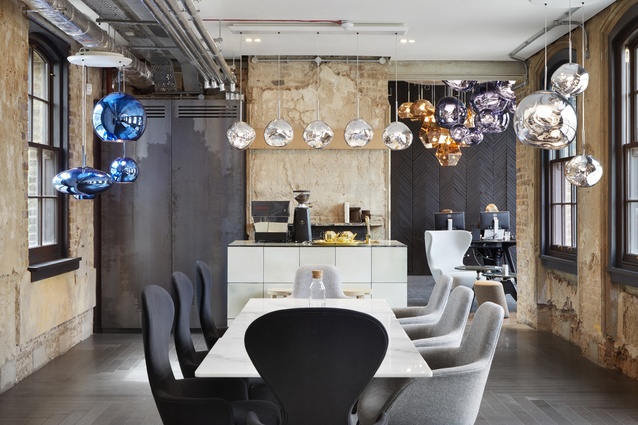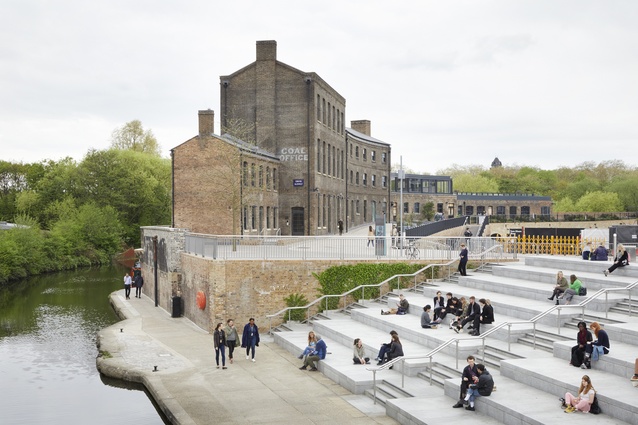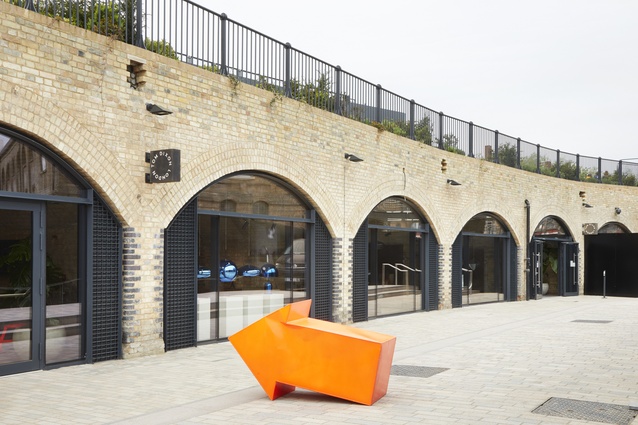The Coal Office: Tom Dixon’s new home
Tom Dixon takes us on a tour of his new headquarters within a heritage coal office in London. We found a space that is a true testament to the man’s creative flair.
It’s the opening of Tom Dixon’s new headquarters and the British designer is showing a gaggle of journalists around. He’s very good at this kind of thing – laid back to the point of being lugubrious yet a hint of the showman is never far from the surface. He evidently enjoys a crowd and possesses a quick, arid-dry wit that the assembled throng laps up. It’s helpful, too, that his new 1625m2 development, containing offices, retail and a (soon to be opened) restaurant, is rather stunning.
The Coal Office is part of a 25-year development programme in London’s King’s Cross, which has transformed the post-industrial area around the railway station from one of the capital’s seedier spots into a new (and actually quite inviting) place. The station itself has had a facelift, courtesy of John McAslan + Partners. David Chipperfield Architects has done an office building, WilkinsonEyre is responsible for creating luxury flats in the old gas holders and The Guardian has offices around the corner while Google is planning to move in.
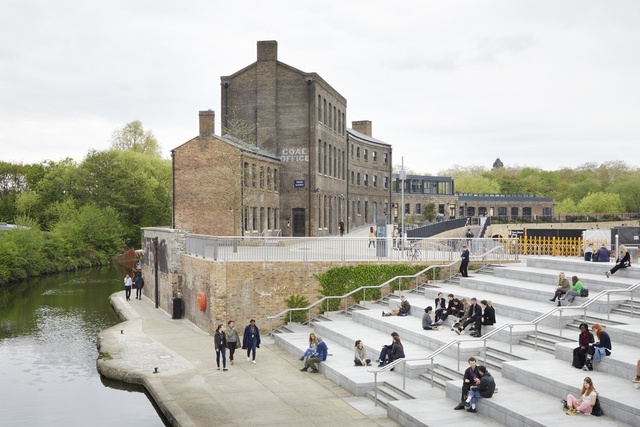
However, arguably most important has been the arrival of Central Saint Martins in The Granary Building, designed by Stanton Williams, and the influx of students it has brought. Meanwhile, adjacent to Dixon’s new development, Coal Drops Yard retail centre, designed by Thomas Heatherwick Studio, is taking shape and due to open later in the year.
The Coal Office itself dates back to 1851 and was originally a distribution building. Subsequently, when industry moved on, clubbers moved in. The site had been earmarked as the HQ for celebrity chef Jamie Oliver before Dixon took it over, with much of the infrastructure work already carried out by David Morley Architects.
Not surprisingly, the office interiors have been left rough and ready, the services running overhead exposed. The railway arches below have been converted into a showroom-cum-retail outlet, with each arch having a separate identity.
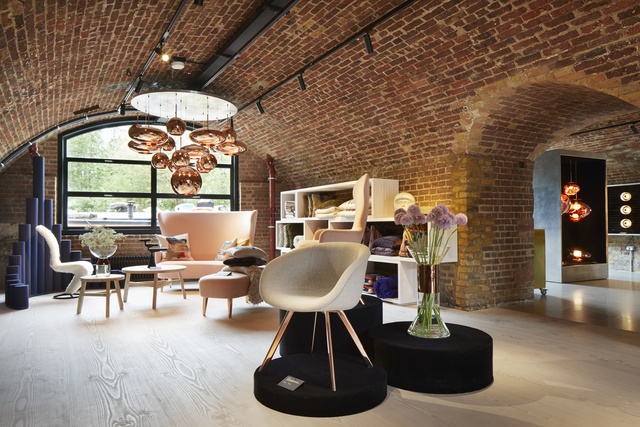
Visitors initially walk into a space Dixon has dubbed The Factory, where small-batch manufacturing and experimentation will take place. They’ll also be able to get their hands on various materials in the coming months: initially, making pendant lights from folded aluminium but, later, there promises to be clay, electronics and even pickling workshops. After that, there are areas devoted to gifts, furniture, textiles and lighting, and a dedicated perfumery. Ultimately, the idea is for the final arch to become a club, in a nod to the building’s heritage.
Coincidentally, at the time of the opening, Dixon accidentally found himself at the centre of one of the most wonderfully bizarre design stories to have gone viral in some time. It goes something like this… a selection of his aluminium cast shoes was used to present dessert during a dinner between the Japanese Prime Minister Shinzo- Abe and Israel’s leader Benjamin Netanyahu.
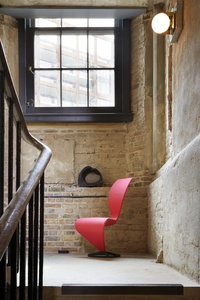
In Japan, it’s customary to leave shoes outside the front door – having them on the dining table is considered deeply disrespectful and contrived to cause a media uproar. It seems the obvious place to start our interview.
Grant Gibson (GG): You appear to be in the middle of the most random design story I’ve read in some time: this Japanese political incident.
Tom Dixon (TD): Yep. Love that. This chap walked into our shop in New York and wanted 12 shoes, saying it was for an important dinner and we sold them to him. It’s extraordinary when you think of all the things there are to get upset about in the Middle East right now. What’s fabulous is how fast it went around the world – it’s so silly that it went viral.
GG: Why King’s Cross?
TD: We’d reached the end of our lease at The Dock so we had no choice. It feels like a good balance because you’re surrounded by quite a lot of new development. It’s not a nostalgic place. I’m very happy here. I was very sceptical at first but, when the restaurant and Coal Drops Yard open, we’ll really know what it’s like. Moving is kind of refreshing. It’s tough; it’s expensive. It’s really difficult in London to find good space – particularly if you want a restaurant licence and a retail licence and office space but King’s Cross feels like the right place to be, mainly because of its immense connectivity. You really can go to Margate or Edinburgh or Brussels really quickly.
GG: I guess, partly because of Central Saint Martins moving here, it felt like a place very quickly.
TD: They’ve been chipping away at it for years and no one really believed them but it has suddenly reached a proper critical mass and a lot of people want to be here. The battle will be to maintain character because it’s expensive but then the whole of London is expensive. Shoreditch is expensive; Hackney is expensive and you wonder what for. At least here you’re easy to get to.
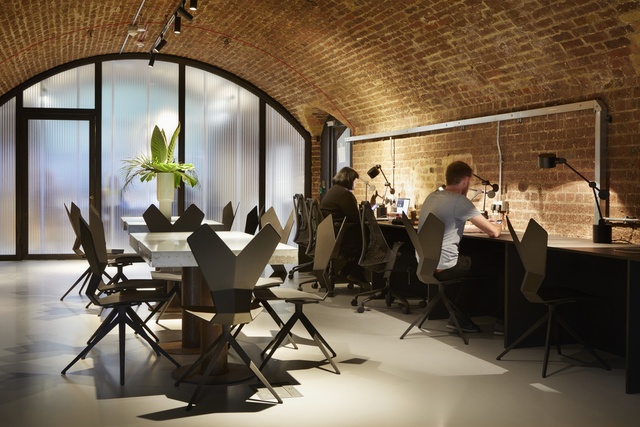
GG: How much work did you have to do on the space?
TD: It was a half-abandoned project by [the chef] Jamie Oliver to have his headquarters here. The infrastructure was done by David Morley but we did a lot of finishing off.
GG: Food and being around restaurants seem to be very important to you.
TD: What I’ve noticed through having a restaurant is that you’re manufacturing every day, really quickly. And I love that. I love the speed of reaction from your customer. I love the enjoyment that you see and get back immediately. It’s an instant feedback loop. I’m partly French. I came from Tunisia and Morocco to Huddersfield when I was four.
GG: Which must have been a culture shock.
TD: If was kind of awful. So, I learned to cook quite early. When I had my first staff, we’d break for lunch and cook in the studio and I missed that. So, when I did The Dock originally, I had a strong feeling that you could combine a showroom with a restaurant. It’s a way of getting people to come to you.
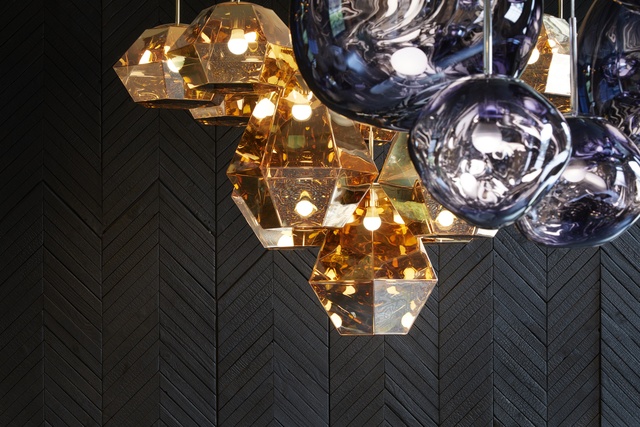
GG: Is that also why you’re doing this Factory idea?
TD: It’s a test. It goes with the restaurant. If we can make a plate of food, why can’t we make the plate as well? We’re sitting on a massive ball of clay in London. It will stay experimental for six months but, when we find the thing we can make in multiples, we’ll take it more seriously. It seems mad to import everything from everywhere else and not London.
GG: When you were welding bits of metal back in the ’80s and ’90s, did you have a sense of where your career would go?
TD: I’ve never had a sense of where my career would go. I started off abandoning art school at foundation, thinking that it wasn’t for me. I wanted to work and took a job as a printer. Then I coloured cartoons; then I was in a band. I made things for fun. And I guess this is about getting the fun back into it: getting the direct contact with clients. I used to make things and sometimes sell them on the same day. Why not have a looser and more interesting design life than working for big companies or even having things made across the world.


